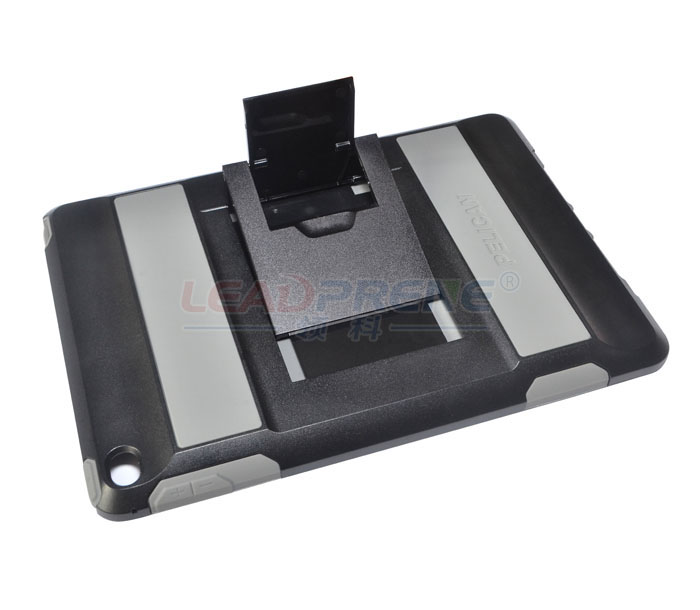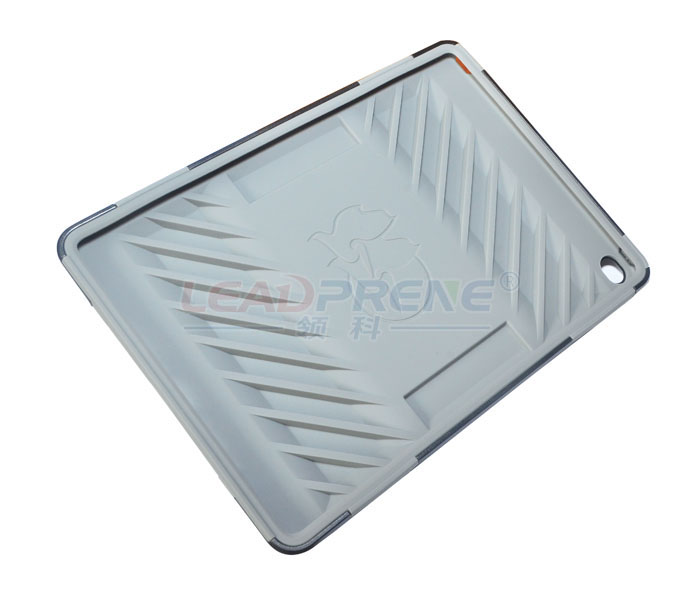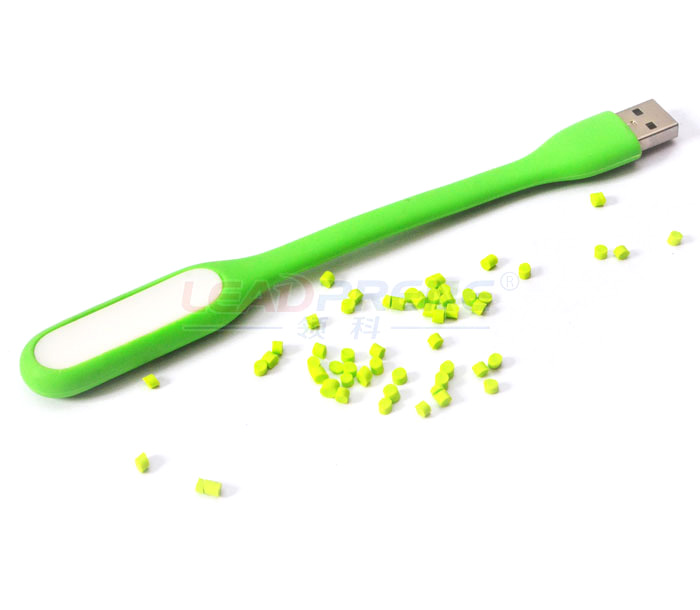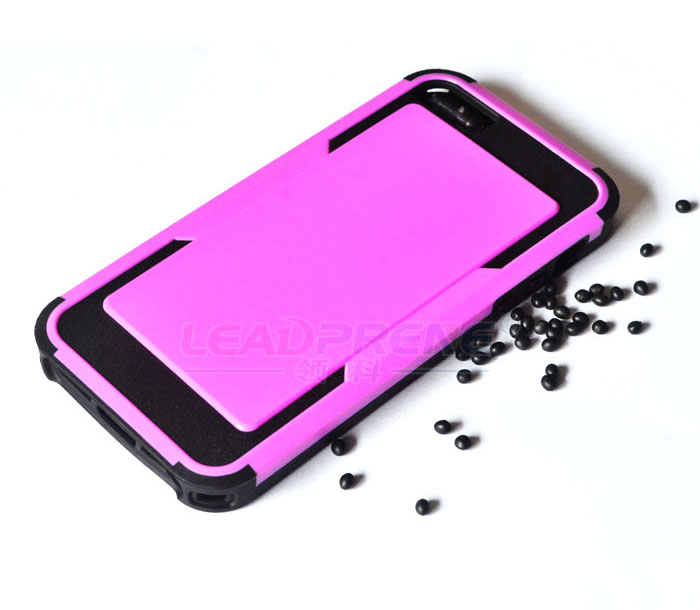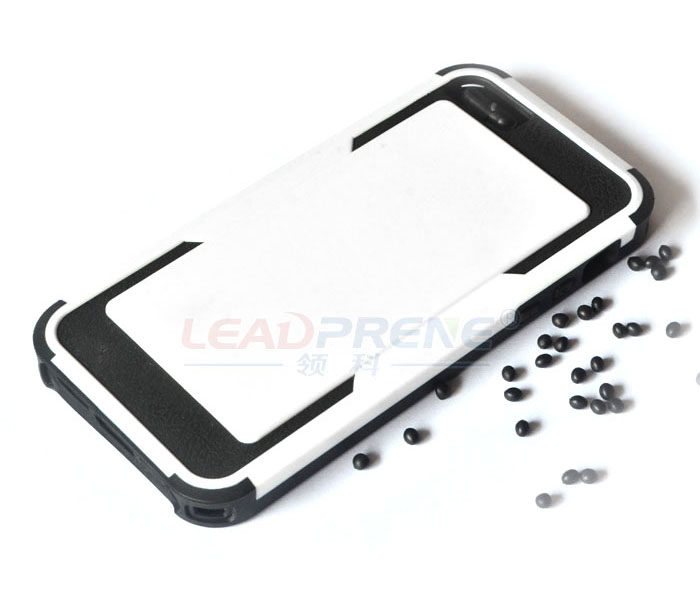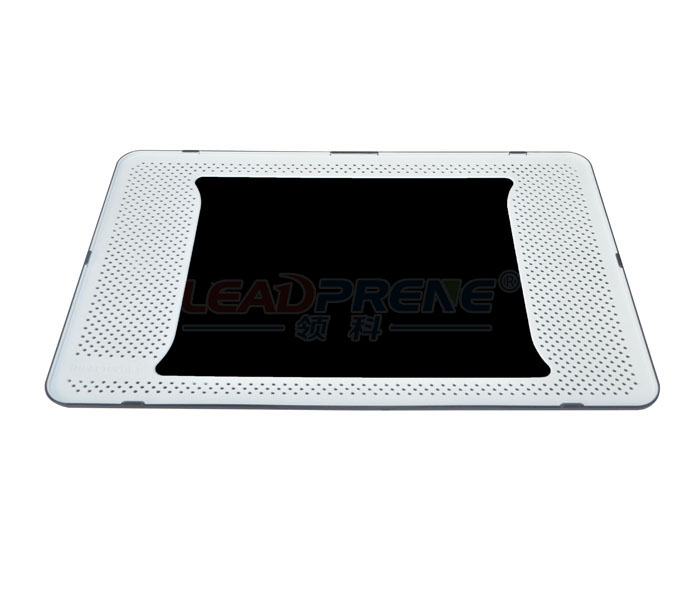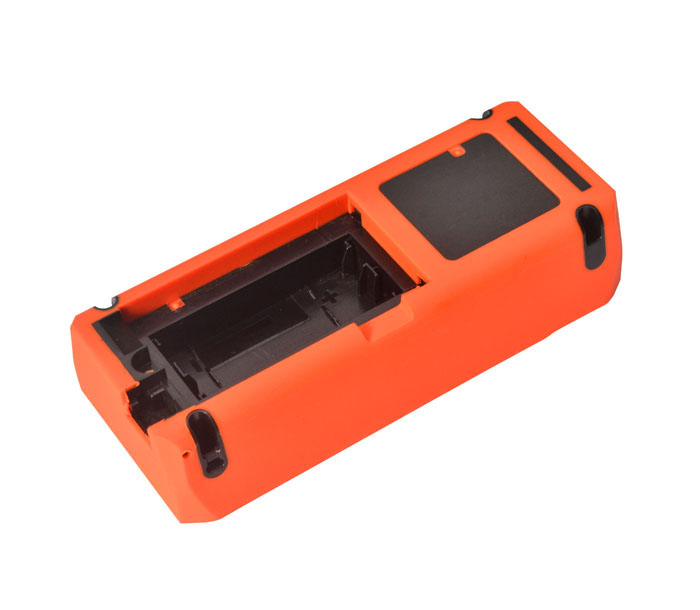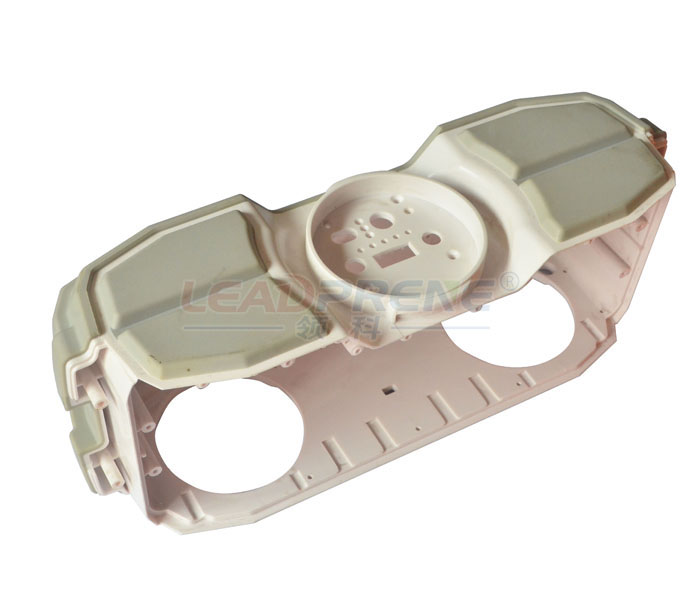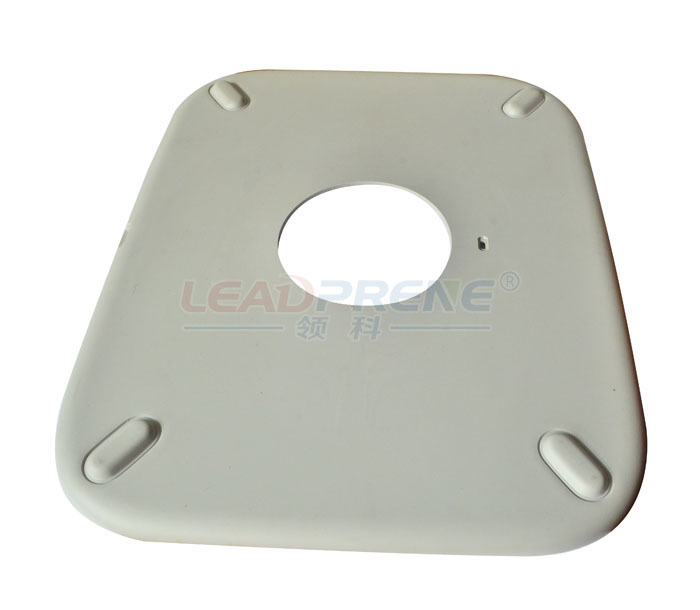Discussion on the modification of TPU
Source:Dongguan LingKe New Materials Co., Ltd. Click:2326Time:2016-03-26 18:27:15【SmallInBig】
Thermoplastic polyurethane elastomer (TPU) as casting polyurethane (liquid) and mixing polyurethane (solid), with high modulus, high strength, high elongation and high elasticity and excellent abrasion resistance, oil resistance, low temperature resistance, aging resistance and so on. Compared with the mixing and casting polyurethane elastomer, no chemical structure or little chemical crosslinking, the molecule is basically linear, contain more molecules in strong polar groups (such as ester, ether, urethane, urea, urea and shrink two allophanate based), these groups of molecules there is a strong force and hydrogen bond between the formation of physical crosslinking. The so-called physical crosslinking is between linear polyurethane chains, there is heat or solvent reversible "connections" which has plasticity and solubility of heat and solvent, it is not a chemical crosslinking, but plays a role in chemical crosslinking . therefore, said the thermoplastic polyurethane. Physical crosslinking theory was first proposed in 1958 by the Schollenberger C.S.. Is also due to the role of the Physical Crosslinking Polyurethane formed a multi-phase morphology structure, hydrogen bonding polyurethane on the morphology of the strengthening effect, and the tolerance of higher temperatures.
As is known to all, TPU and other polymer materials, market and application domain expands unceasingly, the rapid development of. But because of the existence of such as narrow range of processing temperature, processing difficulties (especially extrusion molding), higher prices, heat resistance and weather resistance and poor defect, in some ways limited its development. This paper the change method is discussed.
A classification of [1] TPU.
TPU can be classified according to different methods. According to the structure of the soft segment can be divided into polyester TPU, polyether TPU and polybutadiene based TPU respectively containing ester, ether or butenyl; according to the structure of the isocyanate can be divided into Huang Bianxing (MDI, Todi, NDI, PPDI) and yellow variants (HDI, H12MDI), according to the hard segment structure is divided into ammonia ester type of urethane and urea type. They are by diol chain or diamine chain extender.
According to whether the crosslinking can be divided into thermoplastic and semi thermoplastic. The former is a linear structure, no crosslinks; the latter contains a small amount of allophanate crosslinks.
According to the synthetic process for bulk polymerization and solution polymerization in bulk polymerization, and according to with or without pre reaction points for prepolymer method and one step: prepolymer method is first diisocyanate and macromolecular diol reaction for a certain period of time, then add chain extender in the production of TPU; one step is the macromolecular diol, diisocyanate and chain extender also mixed reaction TPU. Solution polymerization is the diisocyanate is firstly dissolved in the solvent, adding macromolecular diol to react for a certain time, and finally join the chain extender production TPU.
Two, TPU structure analysis, performance characteristics and processing applications
In crystalline form make TPU macromolecule chain by the polarity of polyurethane or polyurea chain segments (hard) and aliphatic polyester or polyether chain segments (soft) alternately. The soft and hard segments between incompatible and polyurethane molecules with high polarity intermolecular interaction crystalline region and micro phase separation. The region of similar filler particles, not only make the room temperature with high elasticity, and the physical and mechanical property of reinforcing effect. Therefore TPU with other polymer materials, properties and molecular weight, molecular interactions (hydrogen bonds and van der Waals force), segment the toughness, the crystallization tendency, branching and crosslinking, and substituent position, polarity and volume size and other factors have a close relationship.
According to the product of the use of the environment and consider the heat resistance of TPU, water resistance, weatherability, resistance to low temperature performance and machining performance. By adding some additives and fillers such as the response regulator, antioxidant, and the hydrolytic resistance stabilizer, ultraviolet absorbent, lubricant and mica powder, glass fiber to improve the sizing performance, but also with other thermal plastic polymer (such as polyvinyl chloride, polypropylene (PP) - butadiene styrene resin (ABS), nitrile rubber polar thermal plastic plastic and rubber, etc.) blending to improve its performance to meet different application requirements.
Basic characteristics of TPU:
1, high mechanical strength, good oil resistance.
2, the wear resistance is particularly good.
3, excellent chemical resistance.
4, processing and forming of the poor.
5, the high cost of
TPU processing mainly uses the injection molding and extrusion molding, injection molding commonly used polyethylene, soft polyethylene injection molding machine to complete, injection conditions mainly with varieties of raw materials, products shape and injection molding machine are related. Also can be formulated as a glue solution, for film, coating, spraying, dipping.
Due to the excellent performance of TPU, wide application range. Excellent abrasion resistance can be used for the sole, transmission belt, conveyor belt, wear-resistant materials. Good resistance to oil for manufacturing oil seals, seal gasket and industrial supplies, sports goods, auto parts and paint manufacturing and so on.
As is known to all, TPU and other polymer materials, market and application domain expands unceasingly, the rapid development of. But because of the existence of such as narrow range of processing temperature, processing difficulties (especially extrusion molding), higher prices, heat resistance and weather resistance and poor defect, in some ways limited its development. This paper the change method is discussed.
A classification of [1] TPU.
TPU can be classified according to different methods. According to the structure of the soft segment can be divided into polyester TPU, polyether TPU and polybutadiene based TPU respectively containing ester, ether or butenyl; according to the structure of the isocyanate can be divided into Huang Bianxing (MDI, Todi, NDI, PPDI) and yellow variants (HDI, H12MDI), according to the hard segment structure is divided into ammonia ester type of urethane and urea type. They are by diol chain or diamine chain extender.
According to whether the crosslinking can be divided into thermoplastic and semi thermoplastic. The former is a linear structure, no crosslinks; the latter contains a small amount of allophanate crosslinks.
According to the synthetic process for bulk polymerization and solution polymerization in bulk polymerization, and according to with or without pre reaction points for prepolymer method and one step: prepolymer method is first diisocyanate and macromolecular diol reaction for a certain period of time, then add chain extender in the production of TPU; one step is the macromolecular diol, diisocyanate and chain extender also mixed reaction TPU. Solution polymerization is the diisocyanate is firstly dissolved in the solvent, adding macromolecular diol to react for a certain time, and finally join the chain extender production TPU.
Two, TPU structure analysis, performance characteristics and processing applications
In crystalline form make TPU macromolecule chain by the polarity of polyurethane or polyurea chain segments (hard) and aliphatic polyester or polyether chain segments (soft) alternately. The soft and hard segments between incompatible and polyurethane molecules with high polarity intermolecular interaction crystalline region and micro phase separation. The region of similar filler particles, not only make the room temperature with high elasticity, and the physical and mechanical property of reinforcing effect. Therefore TPU with other polymer materials, properties and molecular weight, molecular interactions (hydrogen bonds and van der Waals force), segment the toughness, the crystallization tendency, branching and crosslinking, and substituent position, polarity and volume size and other factors have a close relationship.
According to the product of the use of the environment and consider the heat resistance of TPU, water resistance, weatherability, resistance to low temperature performance and machining performance. By adding some additives and fillers such as the response regulator, antioxidant, and the hydrolytic resistance stabilizer, ultraviolet absorbent, lubricant and mica powder, glass fiber to improve the sizing performance, but also with other thermal plastic polymer (such as polyvinyl chloride, polypropylene (PP) - butadiene styrene resin (ABS), nitrile rubber polar thermal plastic plastic and rubber, etc.) blending to improve its performance to meet different application requirements.
Basic characteristics of TPU:
1, high mechanical strength, good oil resistance.
2, the wear resistance is particularly good.
3, excellent chemical resistance.
4, processing and forming of the poor.
5, the high cost of
TPU processing mainly uses the injection molding and extrusion molding, injection molding commonly used polyethylene, soft polyethylene injection molding machine to complete, injection conditions mainly with varieties of raw materials, products shape and injection molding machine are related. Also can be formulated as a glue solution, for film, coating, spraying, dipping.
Due to the excellent performance of TPU, wide application range. Excellent abrasion resistance can be used for the sole, transmission belt, conveyor belt, wear-resistant materials. Good resistance to oil for manufacturing oil seals, seal gasket and industrial supplies, sports goods, auto parts and paint manufacturing and so on.
Related News
- Current situation of thermoplastic polyurethane elastomer technology and market development2016-03-26
- TPU material can be used for which smart wearable devices?2016-03-26
- Thermoplastic TPU wide range of applications2016-03-26
- The next five years the global TPU demand growth of 5.6%2016-03-26
- Eight highlights of the development of China's Polyurethane Industry2016-03-26
- The $700 million TPU film market hot shock!2016-03-26
- Familiar with all kinds of plastic materials2016-03-26
- Modified plastics is one of the most important automobile lightweight materials.2016-03-26
- Orientation of plastic molecules2016-03-26
- The characteristics and requirements of TPU watch strap2016-03-26
- Development prospects and wide use of TPU2016-03-26
- Discussion on the modification of TPU2016-03-26

